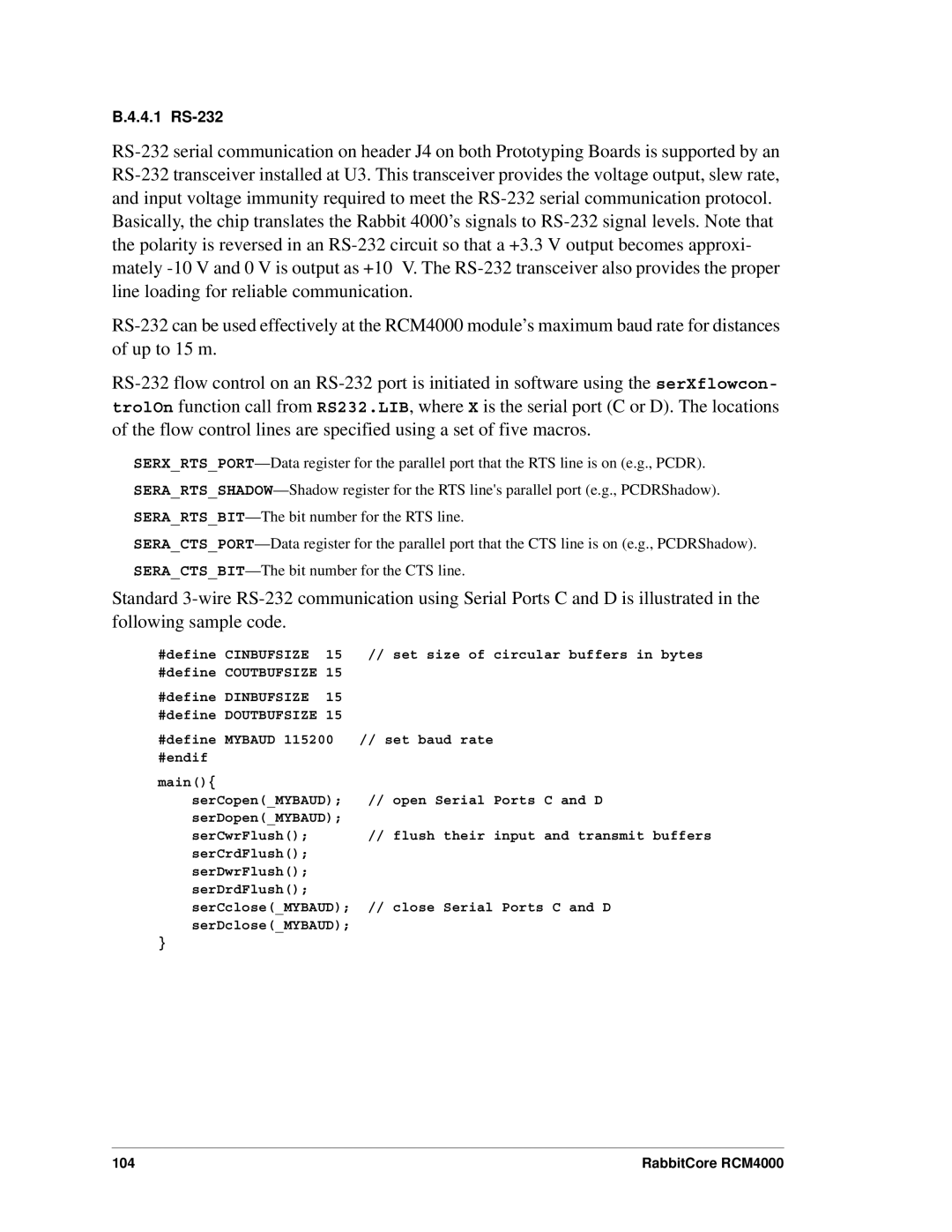
B.4.4.1 RS-232
RS-232 serial communication on header J4 on both Prototyping Boards is supported by an RS-232 transceiver installed at U3. This transceiver provides the voltage output, slew rate, and input voltage immunity required to meet the RS-232 serial communication protocol. Basically, the chip translates the Rabbit 4000’s signals to RS-232 signal levels. Note that the polarity is reversed in an RS-232 circuit so that a +3.3 V output becomes approxi- mately -10 V and 0 V is output as +10 V. The RS-232 transceiver also provides the proper line loading for reliable communication.
RS-232 can be used effectively at the RCM4000 module’s maximum baud rate for distances of up to 15 m.
RS-232 flow control on an RS-232 port is initiated in software using the serXflowcon- trolOn function call from RS232.LIB, where X is the serial port (C or D). The locations of the flow control lines are specified using a set of five macros.
SERX_RTS_PORT—Data register for the parallel port that the RTS line is on (e.g., PCDR). SERA_RTS_SHADOW—Shadow register for the RTS line's parallel port (e.g., PCDRShadow). SERA_RTS_BIT—The bit number for the RTS line.
SERA_CTS_PORT—Data register for the parallel port that the CTS line is on (e.g., PCDRShadow). SERA_CTS_BIT—The bit number for the CTS line.
Standard 3-wire RS-232 communication using Serial Ports C and D is illustrated in the following sample code.
#define CINBUFSIZE | 15 | // set size of circular buffers in bytes |
#define COUTBUFSIZE | 15 | |
#define DINBUFSIZE | 15 | |
#define DOUTBUFSIZE 15 | |
#define MYBAUD 115200 | // set baud rate |
#endif | | |
main(){ | | |
serCopen(_MYBAUD); | // open Serial Ports C and D |
serDopen(_MYBAUD); | |
serCwrFlush(); | | // flush their input and transmit buffers |
serCrdFlush(); | | |
serDwrFlush(); | | |
serDrdFlush(); | | |
serCclose(_MYBAUD); | // close Serial Ports C and D |
serDclose(_MYBAUD); | |
} | | |
